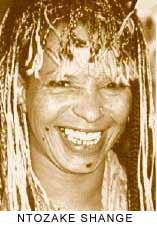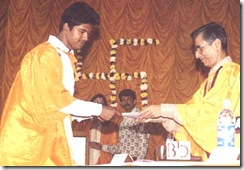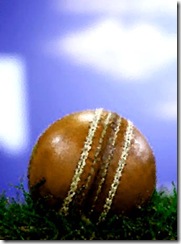[ad]
 When the play was over, one of the boys replied on being queried, that it was an uncomfortable play. Quick came the rejoinder that this play was meant to make men uncomfortable. Well, it might have made the concerned person uncomfortable, and as far as the girls are concerned, they may think that dramas are supposed to make men uncomfortable, but for my part I have different notions.
When the play was over, one of the boys replied on being queried, that it was an uncomfortable play. Quick came the rejoinder that this play was meant to make men uncomfortable. Well, it might have made the concerned person uncomfortable, and as far as the girls are concerned, they may think that dramas are supposed to make men uncomfortable, but for my part I have different notions.
In spite of the literature courses that has been my undoing for these last four years, my idea of drama is sitting through an hour or two of relaxed entertainment. Needless to say, the recipe ought to be shallow material, high on enjoyment content, and should have lots and lots of spectacle. I am told by the people who wrote the books that Shakespeare always wrote such plays. And Shakespeare always had a knack of knowing what would suit the paying public, and what would not. When plays were written which tortured the brain, and badgered the conscience, at least care was taken to compensate for these shortcomings by giving a handsome dose of entertainment. I have never seen a Shaw on the stage, but I have read quite a many, and all of them are gripping. Think of the tragedy of the paying public who spends his hard-earned money on going to a show and then getting slapped continuously for two hours by haughty women. Literary history provides testimony that too much experimentation has always been harder to digest.
Fortunately, the play that we went to see had too much of spectacle. While of course, it would be sexually incorrect to say that one saw spectacle in the play, but this is one of those rare cases when the truth seems tempting. If you haven’t already guessed, the play is a Feministic outrage at male social and sexual hegemony, discrimination and cruelty. It would be presumptuous for me to say that I understood the play properly, or that I paid any more than passing attention to the dialogues which could have brought enlightenment, and so I would desist the temptation of writing a critical on the play. I consider myself far too incompetent. A play which is basically based in the Negro world of America and which shows the female vision of their society, is bound to seem somewhat alien, despite the director’s persistent attempts to make us see the parallels. And thus the disclaimer in the very beginning which first puts the cast in their original setting, and then casts them in an alien world (of course having the big parallels that they were all female, and they were the victims of male sexual brutality – the obvious point of the play). See Director’s note below.
[ad]
The play was outrageous on several points. Of course the selection of the play had much to do with it. It is a very stark play, and any television screening of the play would be censored (thanks to some nice four letter words). The costume of the female cast left nothing more to be desired (and as I, a male, say these words, I am reminded that it is against this sort of mentality and attitude that this play is directed. Well, I feel flattered that someone should play such a nice play for me), and as far as I was considered, my eyes hardly left two from the cast (for reasons other than academic, and precisely why I saw so little else of the play). And being a male who had nothing to do with womankind except things romantic and considering myself innocent on all sexual counts, I found it rather uncomfortable to be at the receiving end of mad mouths of such beautiful girls. I was rather lucky to have escaped the experiences of some guys who had to face the wrath in the direct line of fire (the play involved direct audience involvement so that certain lines of dialogues were directed at individuals; they, of course, were selected arbitrarily). However, as I found very little time to concentrate on the script (myself being busy with an amusing activity not to be disclosed in public domain), I escaped the discomfort to a large extent. The gentleman beside me was livid. The play was not played in a proscenium stage, but rather in an open round stage with audience surrounding the cast all around at an arm’s distance. While this meant a certain amount of desired directness in the conveying of the message, this raises a problem of how the play would be staged in a proscenium stage. Here the cast stood or sat in a circle, and delivered its speeches in all directions- and the availability of the audience so close helped to make the audience more uncomfortable. The script of the play was rather difficult in that it contained many allusions and much connotations which is chiefly alien to an Indian audience (I noticed it was only the professors who were truly appreciating the script).
Much could be said about the theme of the play, but why take up a hackneyed topic. This play provided a very welcome respite in a very mundane academic career, and I must thank the director for providing me something to remember, again for reasons other than academic.
The cast and crew
CAST
Lady in Brown: Shuktara Lal
Lady in Yellow: Rashmi Haider
Lady in Purple: Sonali Roy Chowdhury
Lady in Red: Trina Nileena Banerjee
Lady in Green: Sunayana Roy
Lady in Blue: Nandini Das
Lady in Orange: Sudeshni Datta Chaudhuri
The Men: Indranil Mitra, Aniruddha Maitra, Debsena Banerjee
CREW
Lighting: Abhijit Gupta, Anandi Ghose
Make-up: Rashmi Haider, Debjani Bhattacharyya
Stage Management: Anandi Ghose
Assistance: Sritama Halder, Ushasi Sen, Haimanti Basu
Workshops: Sohini Sengupta Halder
Choreography: Abhijit Gupta, Rashmi Haider
Direction: Ananda Lal
Music: Ananda Lal
Director’s note
Given the academic debates within the department over the last few years, everyone should understand why I am directing this play. It came to me as a shock when I realized that, since 1994, I have made our students perform mainly works by canonical authors. I feel strongly now that they (and Kolkata audiences of English theatre) need exposure to the much vaster range out there – not the same old Shakespeare and Shaw, not stuck between Aeschylus and Brecht. Our reactionary English syllabi refuse to grant adequate space to recent, or non-British, literature. However, since the purpose of these shows is educational theatre, I see it as one way by which I can fulfil my duty of communicating about the real world and artistic changes.
So, I rejected England and crossed the Atlantic. There, I rejected conventional drama and selected a different style altogether, what Shange subtitled a “a choreopoem”. I rejected male authors, for even now most playwrights are men. I rejected the American ethnic mainstream and decided on the Black experience. Thus, I came to the play that made Shange famous in 1976. For Colored Girls….has become essential reading not only in American universities, but also in gender studies and departments of English across the world. Yet, whoever I mentioned it to here in the last few months had never heard of it. Many visibly choked on Ntozake’s non-Anglo-Saxon name.
Our production does not aim to depict Black society or point fingers at its members. Hence I did not emphasize realism to my cast. The acting is presentational. For those of you who think the problems are someone else’s, I offer the following statistics from Swayam, Kolkata: 50 percent of girls encounter sexual abuse in childhood; 85 percent of women face harassment on the streets; 300 die every day owing to improper care or violence during pregnancy.
Jadavpur University Department of English Presents
Ntozake Shange’s
For colored girls who have considered suicide:
When the rainbow is enuf
Premiere: 4 December, 2001
 # Ntozake Shange: About the author
# Ntozake Shange: About the author
# Critical of MIT Dramashop production(1999)
See scanned pic of the review of the performance at USIS Calcutta. The review came in Calcutta Times, TOI.
6 and 11 December, 2001
Technorati Tags: Ntozake Shange,Jadavpur University,Literature,JUDE,For colored girls who have considered suicide,when the rainbow is not enuf,Ananda Lal,Trina Nileena Banerjee
[ad]
 When I was not even ten years old my favourite song was ‘Papa kehte hain’ from the film Qayamat se Qayamat tak. In this film which created waves among the youth, this particular song was favourite with many, putting into words the aspirations and dreams, as well as the apprehensions of the youth at the threshold of adulthood and responsibility. Aamir Khan, in his first film, sings the song on the occasion of his graduation party. While it would be so much worthwhile to quote not only the lyrics of the song, but also the preface which always accompanies the song, let me do without it, hoping only that my Indian friends would remember the words. In the next twelve years the world changed much, not only for me, but for everyone else. Thus in 2001, in Dil chahta hai the same Aamir Khan sings in another graduation party – ‘Hum hai naye, andaaz kyon ho purana?’. The total change of lyrics and the vocabulary might symbolise the changed perception, the changed mentality, the changed attitude, the increasing optimism and recklessness, or whatever. And believe me, reams have been written on these two contrasting phenomena. My own graduation ceremony, [excuse me, there was no party!] might draw references from the above quoted contexts.
When I was not even ten years old my favourite song was ‘Papa kehte hain’ from the film Qayamat se Qayamat tak. In this film which created waves among the youth, this particular song was favourite with many, putting into words the aspirations and dreams, as well as the apprehensions of the youth at the threshold of adulthood and responsibility. Aamir Khan, in his first film, sings the song on the occasion of his graduation party. While it would be so much worthwhile to quote not only the lyrics of the song, but also the preface which always accompanies the song, let me do without it, hoping only that my Indian friends would remember the words. In the next twelve years the world changed much, not only for me, but for everyone else. Thus in 2001, in Dil chahta hai the same Aamir Khan sings in another graduation party – ‘Hum hai naye, andaaz kyon ho purana?’. The total change of lyrics and the vocabulary might symbolise the changed perception, the changed mentality, the changed attitude, the increasing optimism and recklessness, or whatever. And believe me, reams have been written on these two contrasting phenomena. My own graduation ceremony, [excuse me, there was no party!] might draw references from the above quoted contexts.

